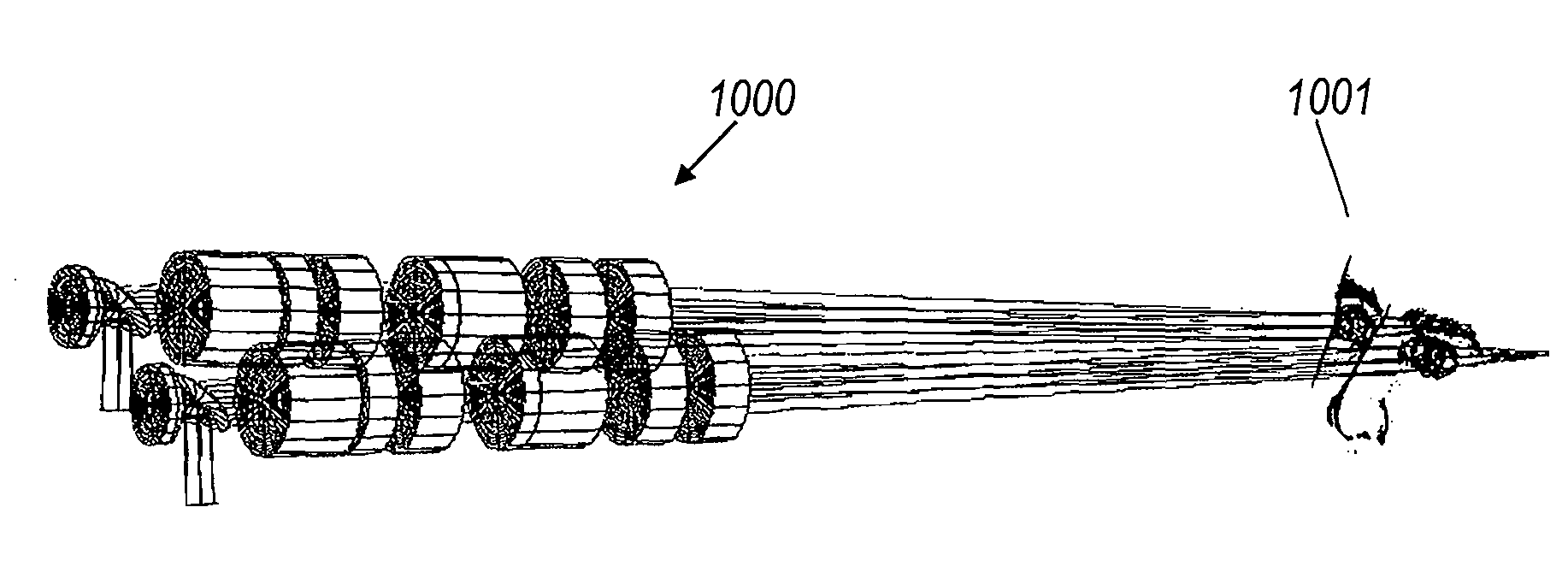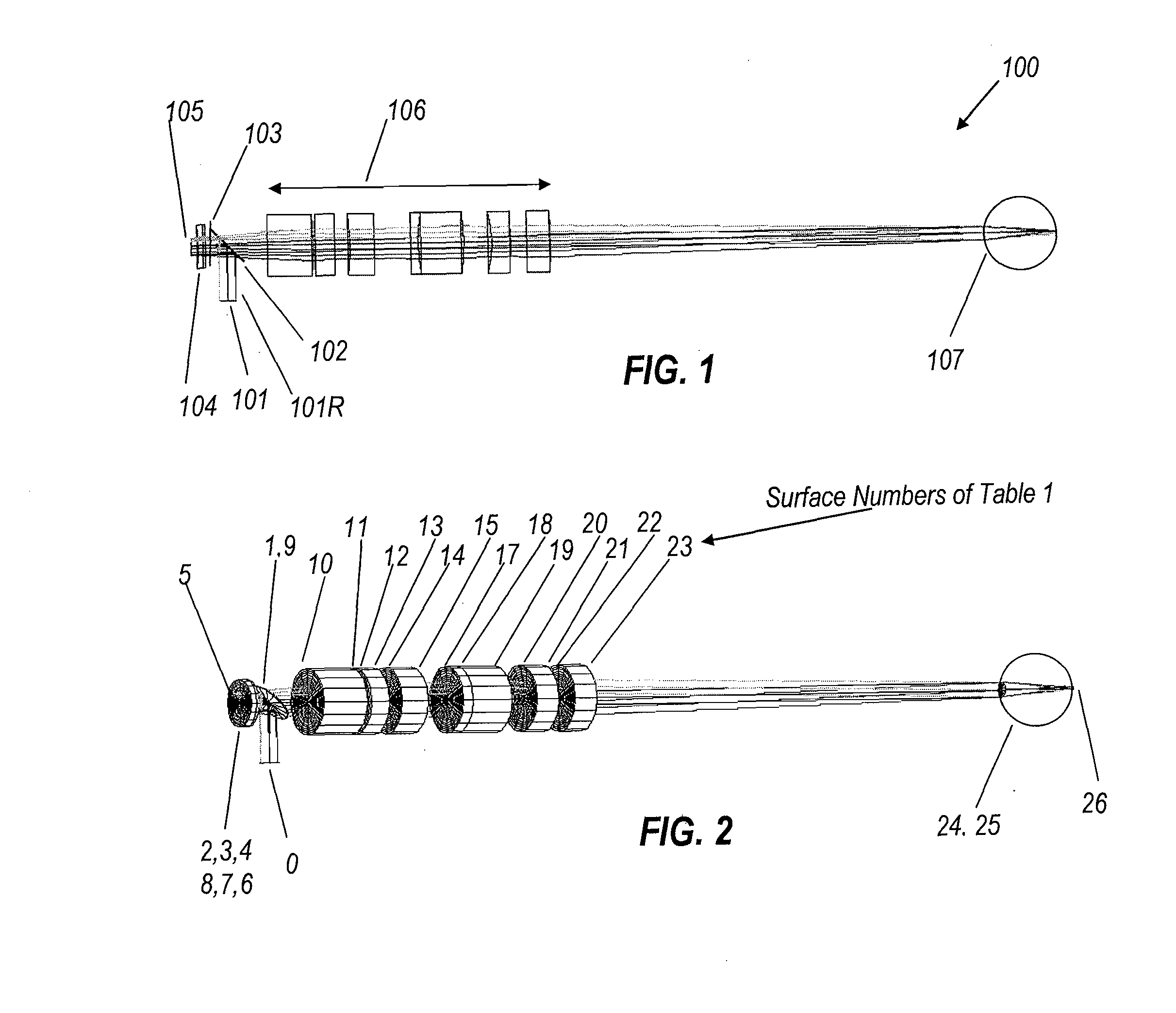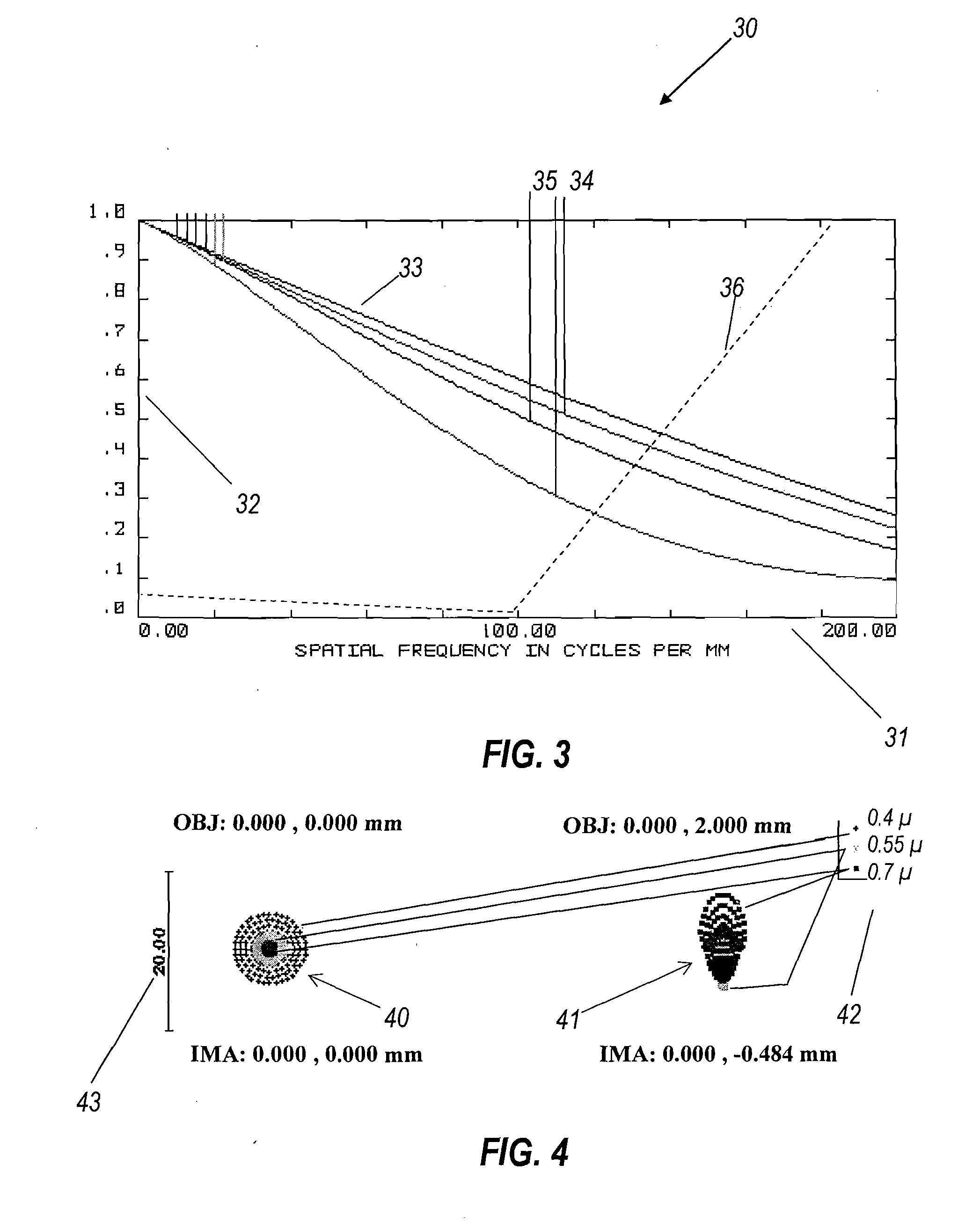3D autostereoscopic display with true depth perception
- Summary
- Abstract
- Description
- Claims
- Application Information
AI Technical Summary
Benefits of technology
Problems solved by technology
Method used
Image
Examples
second embodiment
[0039]The optical prescription of a suitable projector with extended field of view and larger eye box is shown in Table 3.
TABLE 3Distance toGlass to nextApertureSurfaceRadiusnext surfacesurface(mm)ObjectInfinity10.41Air7.41Infinity−6Mirror-air2−629.07−0.5F2325.26−1BK74−37.57−2.33Air5Five values2.33Mirror-air106−37.571BK7725.260.5F28−629.076Air9Infinity9.29Air10−552.0810.51LAK911−50.130.15Air12209.734.85LAK1813−132.763.35Air14−46.315.45SF1115205.255.81Air16Infinity2.64Air17−47351.602SF1018−23.4510.41LASF4319−51.776.5Air20−32.694.306BK7214933.905Air22−274.845.45LASF4123−53.82100Air24Aperture Infinity0Air2Stop(Eye)25Eye lensParaxial F = 171726Image Plane 01.7(Retina)
first embodiment
[0040]The image source of projector 700 shown in FIG. 7, (“object” in the example in Table 3) is the same compact transmission liquid crystal display 701 as in the Beamsplitter 702 (Surface 1 in Table 3), directs the display output to the assembly of negative achromatic doublet 703 (bounded by surfaces 2, 3, and 4) and micromachined membrane mirror 704 (surface 5) made by Flexible Optics Corp or equivalent component from another manufacturer. After reflection at the membrane mirror, a 2D image “slice” passes back through achromatic doublet 703 (surfaces 6, 7, and 8) and beamsplitter 702 (inactive surface 9) and is projected to the eye by reverse telephoto lens 705 (surfaces 10 through 23). Optically inactive surface 16 is an aperture stop of the reverse telephoto lens, and is separately enumerated for convenience. The position of the exit pupil of the projection lens is conjugated with the eye pupil of the observer. The diameter of the exit pupil of the projection lens exceeds the ...
embodiment 1000
[0051]Referring to FIG. 10, a preferred embodiment 1000 of the binocular projection system is disclosed herein comprising two projectors, each of which may be as shown in FIGS. 1 and 2 or in FIG. 7, serving observer 1001. Each projector dynamically creates a succession of depth-slices of a 3D scene, wherein each stereo pair of depth slices has a disparity and apparent image distance that are in accordance with the supposed distance from the objects depicted in that slice to the observer.
[0052]The displays 101, 701 and the mirrors 105, 705 or other optical elements of variable power are controlled by a driver, shown functionally in FIG. 11. The driver typically comprises a processor, non-volatile memory or other storage media for programs, volatile working memory, and storage and / or input for video data. The driver is arranged in use to cause the display to generate successive outputs representing slices of a scene at different distances from an observer position, and to cause the op...
PUM
 Login to View More
Login to View More Abstract
Description
Claims
Application Information
 Login to View More
Login to View More - R&D
- Intellectual Property
- Life Sciences
- Materials
- Tech Scout
- Unparalleled Data Quality
- Higher Quality Content
- 60% Fewer Hallucinations
Browse by: Latest US Patents, China's latest patents, Technical Efficacy Thesaurus, Application Domain, Technology Topic, Popular Technical Reports.
© 2025 PatSnap. All rights reserved.Legal|Privacy policy|Modern Slavery Act Transparency Statement|Sitemap|About US| Contact US: help@patsnap.com



